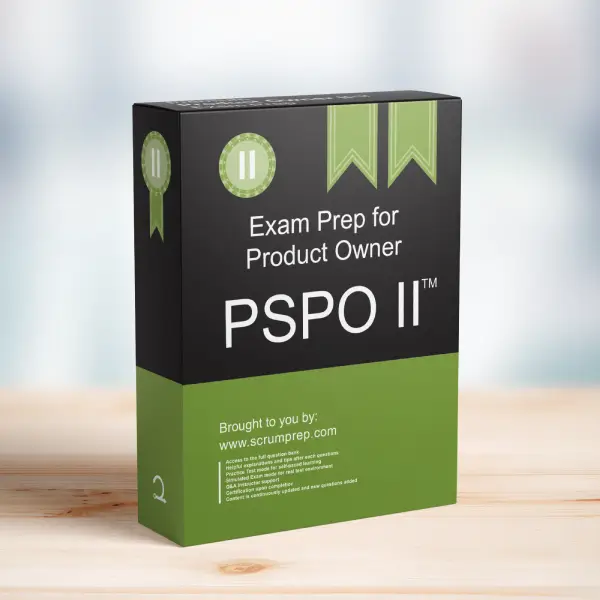Managing a Product Backlog
Effectively managing a Product Backlog is critical for delivering valuable products in Scrum. This article explores the activities involved in managing a Product Backlog and the roles responsible for these activities.
Exam Question
Managing a Product Backlog involves which of the following activities?
(choose all that apply)
A. Ordering the Product Backlog.
B. Forecasting the effort of Product Backlog items.
C. Reviewing the Product Backlog with stakeholders.
D. Reducing or eliminating dependencies between Product Backlog items.
E. Breaking large Product Backlog items into multiple smaller Product Backlog items.
Correct Answers
A. Ordering the Product Backlog.
B. Forecasting the effort of Product Backlog items.
C. Reviewing the Product Backlog with stakeholders.
D. Reducing or eliminating dependencies between Product Backlog items.
E. Breaking large Product Backlog items into multiple smaller Product Backlog items.
Explanation
Correct Answers
A. Ordering the Product Backlog:
The Product Owner is responsible for ordering the Product Backlog to maximize the flow of value. This involves determining the sequence in which Product Backlog items will be addressed based on various factors, including business value and dependencies.
B. Forecasting the effort of Product Backlog items:
Estimating the effort required for Product Backlog items is typically done by the Developers. Accurate forecasting helps in planning and prioritizing work effectively.
C. Reviewing the Product Backlog with stakeholders:
Regularly reviewing the Product Backlog with stakeholders ensures that their feedback and changing requirements are incorporated, maintaining alignment with business goals.
D. Reducing or eliminating dependencies between Product Backlog items:
Dependencies can impede progress and flexibility. Therefore, managing and minimizing dependencies between Product Backlog items is crucial for smooth and efficient development.
E. Breaking large Product Backlog items into multiple smaller Product Backlog items:
Decomposing large items into smaller, more manageable ones helps in better planning and allows for more accurate forecasting and delivery within Sprints.
Responsibilities in Scrum
- Product Owner: Responsible for maximizing the value of the product through effective Product Backlog management. This includes ordering the Product Backlog, reviewing it with stakeholders, and ensuring that items are well-defined and manageable.
- Scrum Master: Facilitates Scrum events and helps remove impediments that affect the Scrum Team’s productivity. They support the Product Owner in maintaining a transparent and well-ordered Product Backlog.
- Developers: Responsible for providing estimates for Product Backlog items and working with the Product Owner to refine and break down items into actionable tasks.
Relevance to the PSPO II Exam
Understanding the activities involved in managing a Product Backlog is essential for the PSPO II exam. This knowledge ensures that candidates can effectively manage and prioritize work to maximize value and achieve business goals.
Key Takeaways
- Managing a Product Backlog involves ordering items, forecasting effort, reviewing with stakeholders, minimizing dependencies, and breaking down large items.
- The Product Owner, Scrum Master, and Developers all play crucial roles in these activities, ensuring that the Product Backlog is continuously updated and aligned with business objectives.
- Collaboration with stakeholders and the Scrum Team is vital for effective Product Backlog management.
Conclusion
Effective Product Backlog management is key to delivering valuable products in Scrum. By understanding and executing the activities involved in managing the Product Backlog, the Scrum Team can ensure that they are always working on the most valuable tasks. For more information on preparing for the PSPO II exam, visit our PSPO II Exam Prep.



